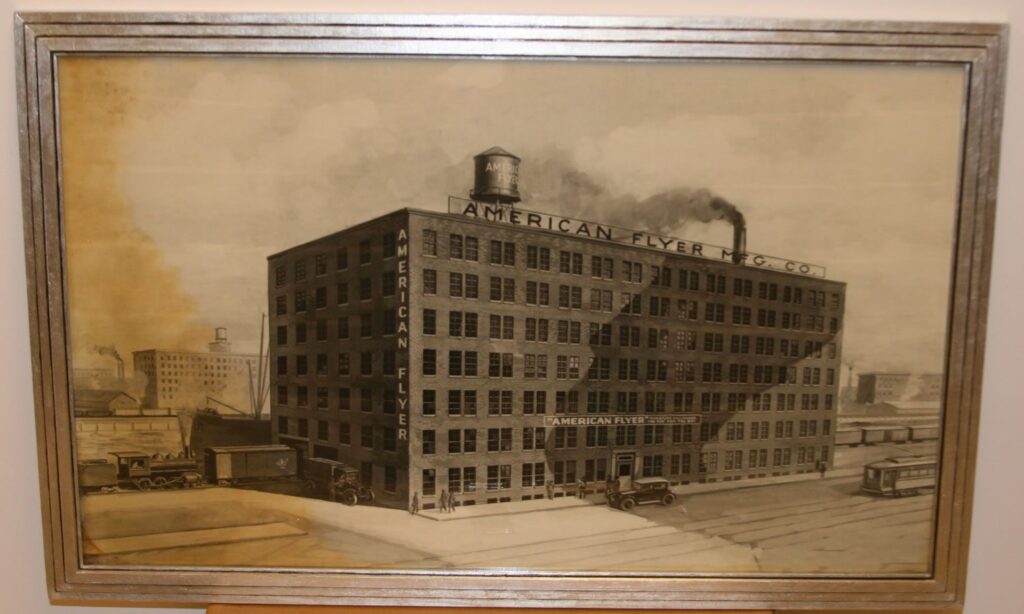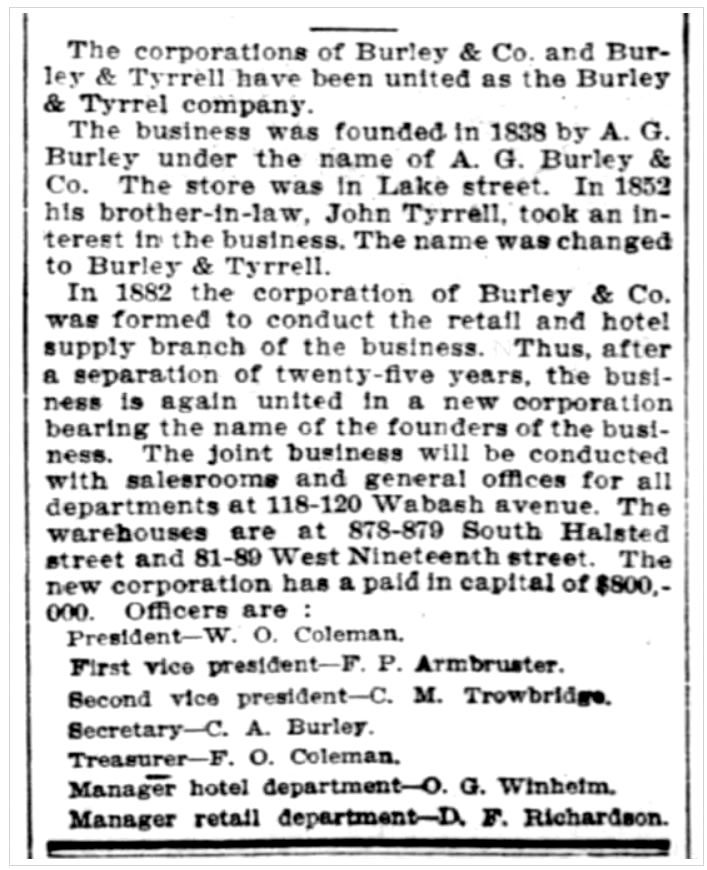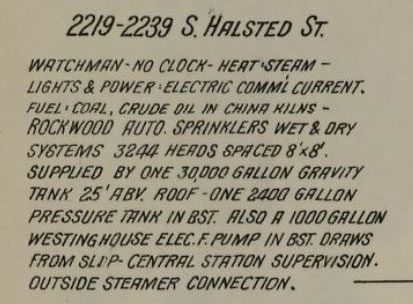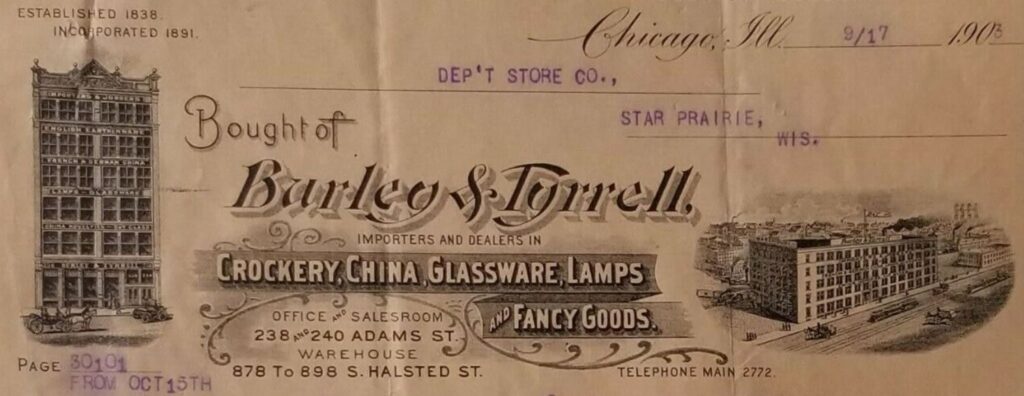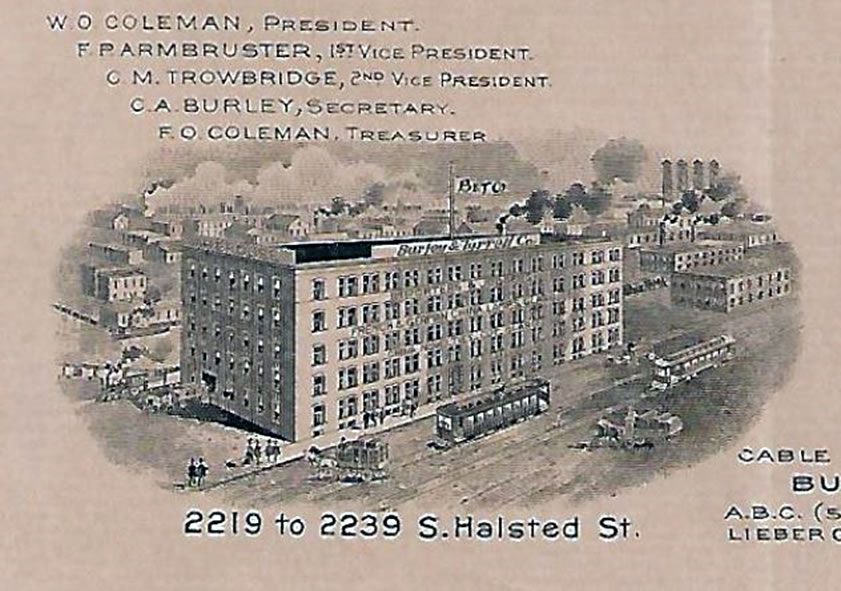Coleman, German China, Real Estate and American Flyer
By Leon Sweet, TCA # 98-47876 Summer 2021
Leon Sweet has written a number of articles on American Flyer and its heritage. Look for them by using the Search box at the right.
While studying for my BBA in Real Estate & Urban Land Economics at the University of Wisconsin – Madison, the professors always stated that real estate was about “Location, Location, Location.”
After graduating, I began my career appraising commercial real estate in the Chicago area and have since performed appraisals throughout the US and Canada. Over the past 25 years I have been amazed at how much the appraisal industry has changed due to the internet. The amount of digitized information available on the internet is staggering and the search engines can uncover amazing links that were not easily researched 10 to 20 years ago.
Recently, while searching through the online Sanborn Fire Insurance Maps from 1914 for Chicago, I happened to be browsing through the volume that covered the former American Flyer factory at 2219-2239 S. Halsted Street. I thought it would be interesting to see what company occupied the building prior to American Flyer moving to the building in 1915. I was shocked to see the name of the occupant, which was Burley & Tyrrell Co., a china importing company. Here’s where the character of William Ogden Coleman, Sr. comes into contact with china from Germany, real estate in Chicago, and the American Flyer Manufacturing Company.
The history of Burley & Tyrrell Co., begins with Arthur Gillman Burley, who was born in 1812 in Exeter, New Hampshire and relocated to Chicago in 1835. In 1838 he invested his savings in a bankrupt stock of crockery purchased from the old State Bank. From those beginnings, Mr. Burley built up his china company, then known as AG Burley & Company. In 1852, his brother-in-law, Mr. John Tyrrell joined the company and the business was conducted under the name Burley & Tyrrell, with Mr. Burley acting as president until his death in 1897. In 1882 the corporation of Burley & Company was formed as a separate entity to conduct the retail and hotel supply branch of the business and was reportedly run by a nephew of Mr. Burley.
W. O. Coleman, Sr. was born January 1, 1864, in Dixon, IL, and in 1882, at the age of 18, he began working for Burley & Company. He worked in various capacities and became a member of the Burley firm in 1893. He rose up the ranks to become Vice President of Burley & Company in 1900. The City of Chicago Directory of Directors list of 1906 lists W.O. Coleman as President, Treasurer, & Director of Burley & Company.
The following notice appears in the March 22, 1907 Chicago Tribune:
Note that W. O. Coleman was listed as the president of the newly formed company. He would retain this position until his death on November 30, 1918. I also note that the S. Halsted Street address in the Chicago Tribune notice appears to be incorrect as it references both even and odd numbers, which would indicate buildings on both sides of the street. Invoices for Burley & Tyrrell dated from 1903 & 1907 list the address as 878-898 S. Halsted Street, so it appears the newspaper notice is incorrect in its reference of address of 878-879 S. Halsted Street.
In March 1919, the Albert Pick & Company announced that it had purchased the business of Burley & Tyrrell Company. The Jewelers Circular further clarified the purchase by noting that the Albert Pick & Company was in the same business and that the windup of Burley & Tyrrell Company was not unexpected due to the recent death of W. O. Coleman, President, as well as the resignation of William Ford, the sales manager of Burley & Tyrrell, Co.
Upon further research, I discovered that the warehouse at 878-898 S. Halsted Street was a warehouse used by Burley & Tyrrell as early as 1903, per listings in a 1903 Certified List of Illinois Corporations (prior to the merger of Burley & Co and Burley & Tyrrell in 1907) and also an original 1903 invoice for Burley & Tyrrell. Therefore, it appears that this building was not originally part of the Burley & Co., which was under the control of W. O. Coleman Sr. and that the building came under his control through the merger of the two companies.
The previous information shows a bit more detail about W. O. Coleman, Sr.’s life, but how does it tie into American Flyer, other than providing W. O. Coleman with the financial means to start a toy train company? The clue is in knowledge of Chicago and its address system. In 1909 the City of Chicago re-numbered all buildings within the city. In 1909, the address of Burley & Tyrrell Company’s warehouse at 878-898 South Halsted Street became 2219-2239 South Halsted Street. The new address should be familiar to Prewar American Flyer collectors, as it was the address of the American Flyer Manufacturing Company from 1915 through 1938.
The following images from the 1914 Sanborn maps, shows the property at 2219-2239 being the location of Burley & Tyrrell Company.
Note that each of the above three images are very similar. They, with the lead photo of this article, all appear to have a shadow over part of the front of the building and they all show various methods of transportation.
In 1907 W. O. Coleman, Sr. also owned Edmonds-Metzel Manufacturing Co., which in 1910 became American Flyer Manufacturing Co. In 1909 the Edmonds-Metzel factory at 1088 W. Wilcox Avenue was severely damaged by fire and the company relocated to 1910-1920 W. Kinzie Street.
American Flyer remained at the Kinzie Street factory until 1915, when the company relocated to the 2219-2239 S. Halsted Street building. The question is why did Burley & Tyrrell Co. vacate the Halsted Street building? They billed themselves as one of the largest importers of china and glassware, so what would cause them to vacate this building? Based on my research of Burley & Tyrrell Co., it appears that they were primarily importing fine china from Germany. I can only theorize that due to the onset of World War I that imports from Europe (especially from Germany) stopped and Burley & Tyrrell Co., suddenly did not need this large warehouse.
The obvious association of W. O. Coleman Sr. with the two companies leads one to the conclusion that American Flyer Manufacturing Company moved to the 2219-2239 S. Halsted Street property simply because W. O. Coleman Sr. had control of the warehouse and required a tenant after Burley & Tyrrell Company vacated the building.
An interesting side note: the invoices from Burley & Tyrrell Co from both 1903 and 1913 shows an image of the 2219-2238 S. Halsted Street building to be 5 stories, which appears to contradict the Sanborn Fire Insurance Maps from 1914 that shows a 7-story building and the c. 1923-1924 images of the factory used by American Flyer Mfg, which show a 7-story building. I uncovered information indicating that the building was expanded in 1908, which leads me to the question: Could the 1908 addition included adding 2 floors to the building? If so, why did the 1913 invoice show a 5-story building?
This newly uncovered link raises another interesting question: Who actually owned the building?
Did W. O. Coleman Sr. have an ownership interest in the building? It is possible that the ownership progressed from Burley & Tyrrell, in business since 1838 (the predecessor to Burley & Tyrrell Company) would likely have had the resources to own the Halsted Street building. Then W.O. Coleman Sr. may have acquired the ownership interest through the merger in 1907.
We know that American Flyer Manufacturing did not own the building in 1938 when the company was merged with AC Gilbert. Given that the Coleman family had an association with the building as early as 1907, did the Coleman family or a related entity own the building and subsequently lease it to American Flyer Manufacturing Company?
Unfortunately, due to the Covid-19 pandemic, the Cook County Recorder of Deeds office is closed and I will have to do further research at a later date.
(Editor’s Note: We anticipate your next article with bated breath!)

